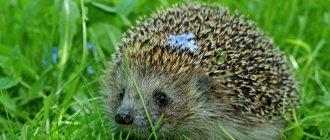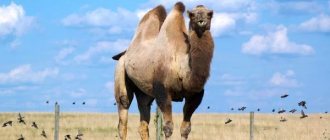August 12 is World Elephant Day. This holiday is intended to draw public attention to the problems of these giants: poaching, diseases and reduction of natural habitat. Today there are only just over 700 thousand elephants left in the world, although at the beginning of the last century there were several million.
AiF.ru has collected 17 interesting facts from the life of elephants.
Photo: www.globallookpress.com
African elephants are larger than Indian ones
There are two types of elephants - Indian and African. Indian elephants live in India, Sri Lanka, Bangladesh, and also on the Indochina Peninsula. The African elephant is common in sub-Saharan Africa. Elephants are found in large numbers only in national parks and reserves.
The African elephant is taller than the Indian elephant, its ears are larger, its skin is rougher, its trunk is thinner, and the tusks that males and females have are more developed. The weight of males reaches 5-7.5 tons, females - 3-4 tons.
Indian male elephants weigh 4.5-5 tons, female elephants - 3-4 tons. Females, as a rule, do not have tusks.
A number of zoologists distinguish among African elephants two different species - forest (living in the jungle) and savannah (living in the savanna). The most important difference between these two subspecies is the shape of the ears and the number of toes. The long-eared savannah elephant has four toes on its front legs and only three toes on its hind legs. The forest elephant has one more toe on each foot.
Elephants of different species do not interbreed and, accordingly, do not reproduce.
Photo: www.globallookpress.com
What is a trunk?
The first thing a person notices when they see an elephant, in addition to its size, is its trunk, which is an upper lip fused with the nose as a result of evolution . Thus, elephants got a fairly flexible and long nose, consisting of 500 different muscles, and at the same time not having a single bone (except for the cartilage on the bridge of the nose).
The nostrils, like those of humans, are divided into two canals along their entire length. And at the tip of the trunk there are small but very strong muscles that serve the elephant as fingers. With their help, the elephant will be able to feel and pick up a small button or other small object.
First of all, the trunk serves as a nose, but with its help elephants breathe, smell, and can also:
- drink;
- get your own food;
- communicate with relatives;
- lift small objects;
- bathe;
- defend;
- express emotions.
From all this it follows that the trunk is a useful and unique tool. In everyday life, an adult elephant cannot do without a trunk, just as a person cannot do without hands. Reference. The baby elephant is not trained to use its trunk correctly and constantly steps on it when walking. Therefore, before fully learning to control the trunk, the baby elephant simply uses it to hold on to its parent's tail while moving.
Return to content
Elephant is a sacred animal
The elephant is one of the most important symbolic figures of Hinduism and Buddhism. An example is Airavata, the elephant ridden by Indra, the king of the gods and ruler of the heavenly kingdom in Vedic and Hindu mythology. Buddha himself in one of his incarnations was a white elephant. Some gods of the Hindu pantheon are depicted in the form of an elephant, for example, the god of wisdom Ganesha.
The oldest temple in Chiang Mai, Wat Chiang Man. Thailand. Photo: www.globallookpress.com
Trunk as a sensory organ
The nostrils located along the trunk help the animal to smell food well . Scientists conducted studies that proved that an elephant can quickly make a choice between two containers, one of which is filled with food, using its sense of smell.
The sense of smell also allows the elephant to:
- find out whether another elephant belongs to your own or someone else’s herd;
- find your baby (for mother elephants);
- detect odors at a distance of several kilometers.
Thanks to 40,000 receptors located in the trunk, the elephant's sense of smell is extremely sensitive.
Return to content
Elephants are vegetarians
Elephants feed exclusively on plant foods: leaves, branches, shoots, bark and roots of trees and shrubs. During the wet season, most of the diet consists of herbaceous plants such as papyrus and cattails. Old elephants feed mainly on swamp vegetation, which is less nutritious but softer.
Each day, one elephant consumes from 100 to 300 kg of food (5% of its own weight) and drinks 100-220 liters of water.
Photo: www.globallookpress.com
Data
The University of the Witwatersrand conducted a study on elephant sleep. Of course, this process has already been observed in zoos, having established that elephants sleep for 4 hours. But sleep in captivity is always longer than in the wild, so South African biologists decided to measure sleep duration based on the activity of the elephant's most mobile organ, the trunk.
The animals were released into the savannah, equipped with gyroscopes (which showed in which position the elephant fell asleep), as well as GPS receivers that recorded the movements of the herd. Zoologists found that their experimental subjects slept for a maximum of 2 hours, and as a rule, while standing. The elephants lay down on the ground once every 3-4 days, falling asleep for less than an hour. Scientists are confident that it was at this hour that the animals entered the REM sleep phase, when long-term memory is formed and dreams occur.
It also turned out that giants need peace and quiet: the source of tension can be predators, people or herbivorous mammals roaming nearby.
It became clear that elephants' wakefulness and going to sleep are not entirely related to the time of day. The animals were guided not so much by sunsets and sunrises, but by the temperature and humidity conditions that were comfortable for them: more often than not, elephants fell asleep in the early morning, until the sun rose.
Conclusion: in the wild, elephants sleep half as much as in captivity, and four times less than humans.
Elephant pregnancy lasts about two years
Pregnancy in elephants is the longest among mammals and lasts 20-22 months. The female usually brings only one cub; twins occur in exceptional cases (only 1-2%).
A newborn elephant calf weighs 90–120 kg with a height of about 1 m. 15–30 minutes after birth, it rises to its feet and can follow its mother.
Females look after their calves for four years after birth, while milk feeding can last 1.5-5 years.
Childbirth occurs every 2.5–9 years; during her life, an elephant gives birth to 1–9 cubs.
Photo: www.globallookpress.com
Communication
Despite the fact that scientists have proven the ability of elephants to communicate using infrasound, the trunk plays an important role in the communication of these animals. Most often, such communication is as follows:
- greeting - elephants greet each other using their trunk;
- help for offspring.
Elephants also use their trunks to communicate with their babies. Despite the fact that the little elephant calf still walks quite poorly, he still needs to move, and his mother helps him with this. Holding on with their trunks, the mother and calf move little by little, as a result of which the latter gradually learns to walk.
Adults can also use their trunk to punish offending offspring. In this case, of course, the elephants do not put all their strength into the blow, but lightly spank the children. As for communication between elephants, these animals love to touch each other with their trunks, stroke their “interlocutors” on the backs and show their attention in every possible way.
Return to content
Food and drink
One of the most important functions of the trunk is considered to be the extraction of food and water. With the help of this organ, the animal searches for and obtains these vital products.
Food
The elephant differs from other mammals in that it eats food primarily with its nose, with which it obtains it . The diet of this animal depends on the type of elephant. Since the elephant is a mammal, it eats mainly plants, vegetables and fruits.
Indian elephants prefer to eat leaves plucked from trees and roots of uprooted trees, while African elephants prefer to eat grass. Most often, they prefer food picked from a height of no higher than two meters; less often, an elephant can stretch even higher and even rise on its hind legs if the prey is worth it.
This is interesting! Also, an elephant's eating habits may change depending on the season and weather.
Every day, these animals are forced to travel very long distances in search of food, since an adult elephant needs to eat about 250 kilograms of food per day to be in normal condition. Typically, this procedure can take a proboscis up to 19 hours a day.
And if an elephant does not have enough normal food, then it can eat bark torn from a tree, thereby causing enormous damage to nature, since it is impossible to restore such trees. On the contrary, African elephants are capable of spreading many plant species. Due to the structural features of the digestive system, elephants have very poor digestibility of food, and they are able to transfer eaten seeds to other places.
Drink
Usually the animal scoops up water with its trunk and absorbs it in a volume of 150 liters per day. In drought, to quench their thirst, elephants are able to use their tusks to dig holes up to one meter deep in search of groundwater and drink it by scooping it with their trunk.
This is interesting! The trunk of the trunk can contain about 8 liters of water at a time.
Adults take water into their trunk and put it into their mouth.
Return to content
Elephant "Santa Barbara": it is important that there are no fights
Now, when this unfamiliar elephant walks around the habitat of several families, I clearly see how much larger the males are than the females.
“Oh my God,” Vicky gasps, “what a monster!”
An adult twenty-five-year-old elephant appears to be half the size of her gentleman.
“Look, look,” Vicky whispers, “she’s coming to say hello.”
They purr, their trunks intertwining for a moment. It is unlikely that she is in heat now - next to her is a baby elephant, which she is probably still feeding. Nevertheless, this elephant does not allow Vronsky to approach her.
Here the stranger freezes and, with some exaggerated carelessness, throws his giant trunk over his powerful tusk.
“This is so that the elephants understand that there is nothing to be afraid of.” It’s as if he’s telling them: “See how peaceful and calm I am. I came in like that, like a relative. I'm not scary." That’s what we call it: “drop in like a family,” Vicky smiles. — Of course, we just have a series about elephant life, “Santa Barbara,” which you will definitely get hooked on. I wonder who is having affairs with whom. So what should Vronsky do now?
It is important that it does not lead to fights. If the males begin to fight, then it is “six tons of live weight on each side, and they move towards each other at a speed of almost fifty kilometers per hour, with their massive sharp tusks thrust forward
This is a fight to the death."
Cynthia Moss once had a chance to watch a fight between two equal opponents. The confrontation between the two males in the must lasted a full ten hours and twenty minutes, without a single break. At the same time, the elephants came together directly only three times: madly locking their tusks together, they tried to knock each other off their feet and throw them to the ground.
The rest of the time they circled the distance, sometimes shortening it, sometimes increasing it, roaring, uprooting trees and bushes, trying to intimidate the enemy. At one point, one of them perched his front leg on a log to make himself appear taller. As a result, the younger one lost his nerve and retreated.
Meanwhile, Duke, a young elephant about fourteen years old, appears about four meters from the car. Stretching his trunk in my direction, he sniffs the stranger, then seems to decide to move away, but this is a maneuver. As if wanting to show who is in charge here, he turns sharply, throws up his head, furiously beats his ears and, straightening them, grows in front of us, arrogantly shaking his head and threateningly moving his trunk.
Small brown eyes bore into me as he slowly approaches. I see the wrinkles and folds of his trunk, the moving skin of his ears, I see every detail, every feature of his appearance - terrifying, but not yet completely convincing.
It's easy for Duke to trample us, but he's not going to do it. His behavior is teenage bravado, which will pass with age. He puffs himself up to show how big and strong he is, but he himself is not entirely sure of this and is only trying on the role of an adult.
But he is confident in our reaction, which is why he climbs in, although in fact he does not feel a threat from us. He is not afraid, not worried, and has no intention of harming us.
I understand what he wants to do. He expresses his intentions and I read them. He sends me information and I accept it. In other words, communication occurs between us, or, in scientific terms, communicative interaction.
Mating according to an individual schedule
We pass three large males. One of them, Vronsky, is a famous brethren. Even older elephants try not to mess with him. Vronsky is now in must - a period of intense sexual arousal and aggressiveness, which periodically occurs in the dominant males of the population upon reaching the thirty-year mark. (By the way, this word means “intoxication” in Urdu.)
The elephant remains in this state for several months. He constantly bullies other males, whom he sees as rivals, and behaves like a deer during the rut. But for deer, the rut occurs simultaneously, in the fall. In elephants, this occurs in accordance with the life hormonal cycle of each individual individual.
Such an individual schedule, which representatives of other orders do not have, is an amazing find of nature, which has made the life of female proboscideans easier and the life of males safer. This breeding system is much more convenient than that of artiodactyls or pinnipeds, where alpha males are forced to defend their harems from encroachments: for a short period of dominion they have to pay with constant battles with rivals who exhaust them, cripple them, and then completely overthrow them, thereby signing them death sentence.
Among elephants, the most powerful and oldest males go on Don Juan tours at the beginning of the rainy season, because in every family they are waiting for fertile females in heat, ready for intercourse.
My guide Vicky explains:
— There is usually no spirit of competition among males. They treat each other well and have fun together. As long as there is no female in heat nearby, they have nothing to share. Young elephants aged fifteen to twenty years are interested in the opposite sex, but how can a twenty-year-old youth compete with a fifty-year-old elephant that is twice as heavy?
During must, the male's testosterone level jumps fourfold, and he behaves imperiously and aggressively. And since female elephants unconditionally prefer males in this state, the young do not even try to compete with them. They must have it at about thirty years old - that’s when they will get their first real sexual experience.











